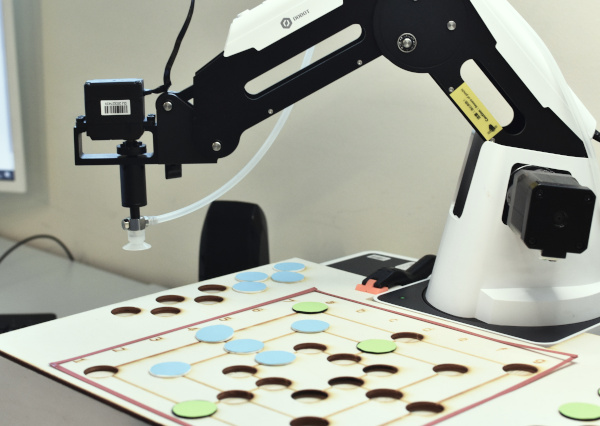AI for manufacturing (KI-Net)
 The KI-Net project is an
Interreg research project (2020-01-01 to
2022-06-30) in which we broadly investigate methods of artificial intelligence
and beyond in the application domain of manufacturing and industrial
production. The consortial lead is at
SCCH with additional
consortial partners at the Univ. of Innsbruck (Anna Fensel), HS Kempten (Dirk
Jacob), TH Rosenheim (Kai Höfig) and FH
Salzburg
(Stefan Huber) as consortial partners.
The KI-Net project is an
Interreg research project (2020-01-01 to
2022-06-30) in which we broadly investigate methods of artificial intelligence
and beyond in the application domain of manufacturing and industrial
production. The consortial lead is at
SCCH with additional
consortial partners at the Univ. of Innsbruck (Anna Fensel), HS Kempten (Dirk
Jacob), TH Rosenheim (Kai Höfig) and FH
Salzburg
(Stefan Huber) as consortial partners.
The project also has a website: www.ki-net.eu
Another website at FH Salzburg: here
Project team at Salzburg:
- Stefan Huber
- Georg Schäfer
- Hannes Waclawek
Workshops and demonstrations
As usual for EU Interreg projects, a main focus lies also in the dissemination and demonstration of prototypes with a focus on SMEs. See the project website www.ki-net.eu for details.1 There are a couple of knowledge transfer events planed in around May 2022 for each consortial partner, in particular on May 12 at Salzburg.
 As a part of knowledge dissemination, my working group in Salzburg developed a
demonstrator for methods of artificial intelligence, digital twins and robotics
by means of an Nine Mens Morris game played by robots and/or humans. It will
demonstrate:
As a part of knowledge dissemination, my working group in Salzburg developed a
demonstrator for methods of artificial intelligence, digital twins and robotics
by means of an Nine Mens Morris game played by robots and/or humans. It will
demonstrate:
- Computer vision and natural language processing
- Some methods for AI-based game play (maybe including reinforcement learning)
- A model-driven system architecture based on OPC UA to enable remote game play over the internet and the integration of AI modules, industrial modules like PLCs of different vendors, computer vision modules, and so on. That is, we use OPC UA as a full-fledged middleware2 with interface modeling, for information modeling and for communication.
- Employment of digital twins for the above tasks. Here OPC UA significantly simplifies the task.
This demonstrator was developed in tight collaboration with HS Kempten. In particular, we can have a geographically distributed game play, where Kempten employs their own developed tripod Plotbot controlled by an industrial PLCs from B&R industrial automation, while we use a simple Dobot.
Original research
In addition to the above demonstrator, we investigated a couple of original research topics.
We leveraged established machine learning frameworks, such as TensorFlow, to improve numerical optimization tasks in automation industry, namely optimizing cam profiles in terms of \(\mathcal{C}^k\)-continuous spline approximation, see [HW22] .
We combined the standard model of intelligent agents as given by Russel and Norvig and the standard model of digital twins, as given for instance by Kritzinger. In particular, we presented an OPC UA-based architecture to deploy reinforcement learning, see [SKWH22] .
A student’s project addressed the question of applying AI-based methods to the commissioning problem, which is essentially an instance of the Traveling Salesperson Problem, see [LWUH22] .
-
The website is targeted at a German-speaking audience. ↩
-
See van Steen & Tanenbaum, Distributed Systems, for details. When we say “middleware”, we mean remote procedure calls, message passing systems, middleware services, architecture neutral communication agnostic w.r.t. hardware, operating system, programming language and so on. ↩